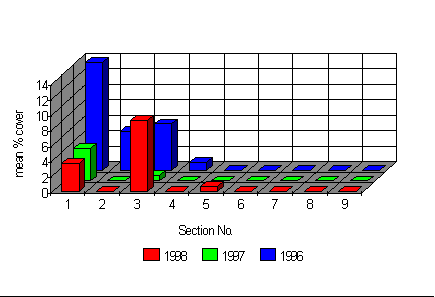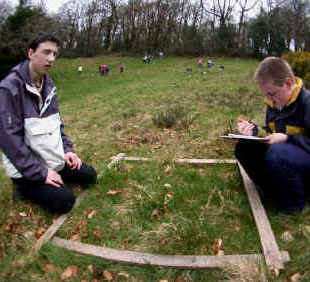 |
The distribution of Bluebells on
the project site. |
 The Effects of Management - Brush
cutting
The Effects of Management - Brush
cutting
left: Bluebells on the Heathland Restoration site.
b) Timing
Bluebells were initially found over all of sections 1 - 4 (Figure below). However, from 1997 - 1998, the bluebells have declined in abundance except in section 3 ( Figure below). They have been almost eliminated from sections 2 and 4 (Figure). They still occur in these two sections, but their abundance is greatly reduced and they did not occur in any of the samples taken in 1997 and 1998 (Figure)
 |
The distribution of Bluebells on
the project site. |
The gradual elimination of bluebells from sections 2 and 4 must be a result of the management regime in these two sections. Sections 2 and 4 are duplicates of the same management regime which is a spring brushcut (Table). In the spring, the bluebells are just regenerating after the winter. They use up storage reserves in the underground bulbs to produce foliage and then the characteristic flowers. Cutting the bluebells before they have had time to replenish the reserves in the bulbs must be leading to their gradual elimination in these areas.
 |
For an |
Continue to the effects of management - frequency of brushcutting
| Heathland Restoration Project Report | ||||

Other Lowland Heaths in East Devon